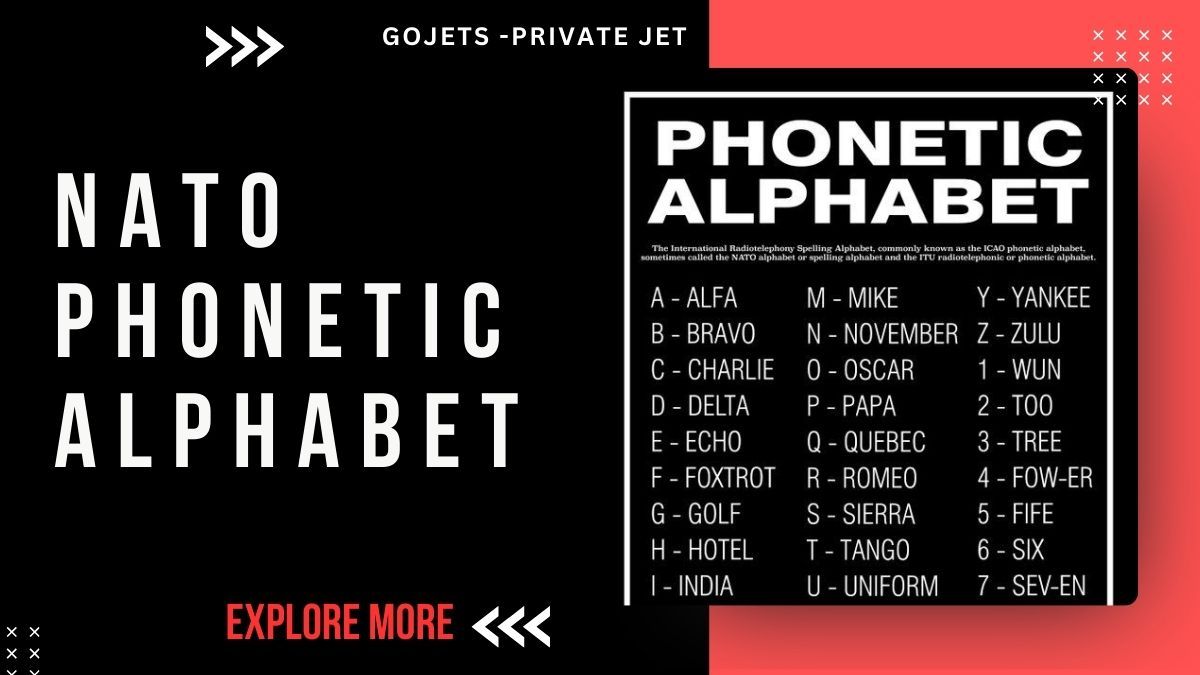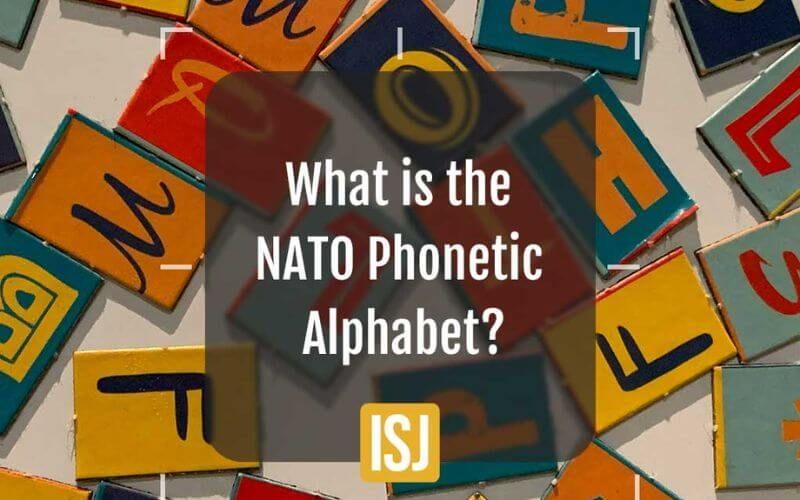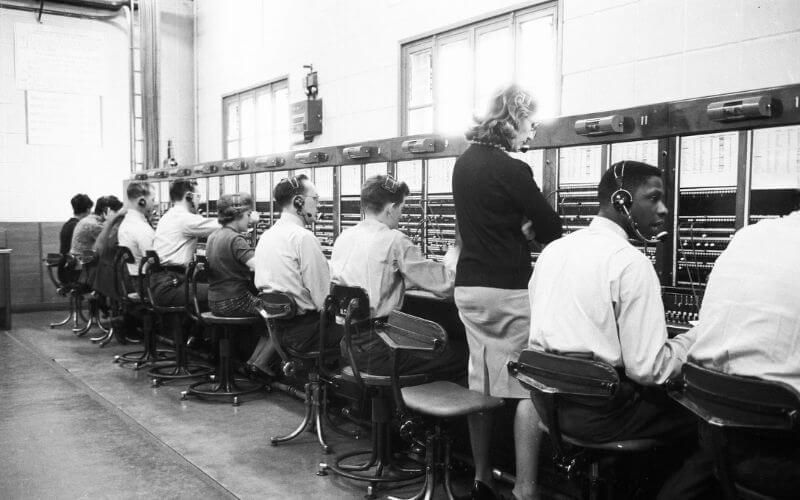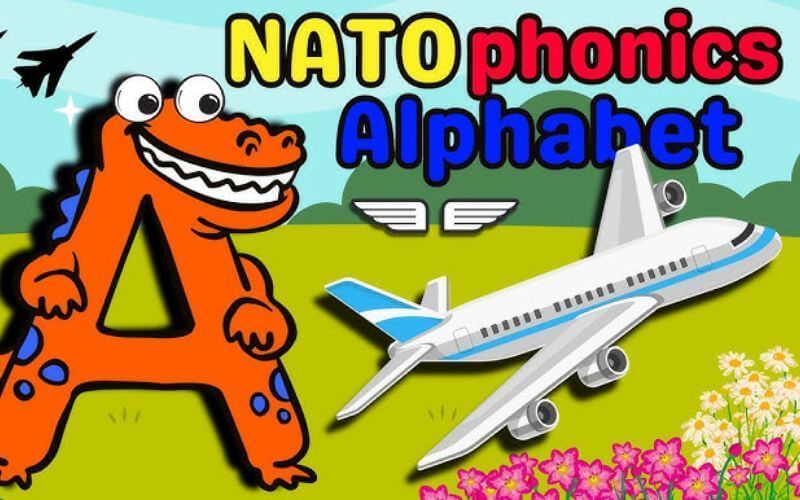NATO Phonetic Alphabet: A Comprehensive Guide
Clear communication is critical in aviation, maritime operations, military communications, and emergency services. Misunderstandings due to similar-sounding letters or noisy environments can have serious consequences. The NATO phonetic alphabet provides a standardized system for spelling words clearly and concisely, minimizing the risk of errors. This comprehensive guide explores the history, structure, pronunciation, and practical applications of the NATO phonetic alphabet, empowering you to communicate with precision and confidence.

What is the NATO Phonetic Alphabet?
The NATO phonetic alphabet, officially known as the International Radiotelephony Spelling Alphabet (IRSA), is a standardized system of code words used to spell out letters over radio or phone.
Developed to prevent miscommunication due to similar-sounding letters or noisy environments, this alphabet assigns distinct code words to each letter of the alphabet, like Alpha for "A," Bravo for "B," and Charlie for "C."
The NATO/IRSA alphabet's clear and concise nature makes it an essential tool in aviation, maritime operations, military communications, emergency services, and any situation demanding precise communication. This international code enhances clarity and minimizes errors, ensuring that critical information is conveyed accurately.

Understanding the Structure and Code Words
The 26 Code Words
Here are the 26 code words of the NATO phonetic alphabet, along with their corresponding letters:
- Alfa - A
- Bravo - B
- Charlie - C
- Delta - D
- Echo - E
- Foxtrot - F
- Golf - G
- Hotel - H
- India - I
- Juliett - J (Note the double "t")
- Kilo - K
- Lima - L
- Mike - M
- November - N
- Oscar - O
- Papa - P
- Quebec - Q
- Romeo - R
- Sierra - S
- Tango - T
- Uniform - U
- Victor - V
- Whiskey - W
- X-ray - X (Note the hyphen)
- Yankee - Y
- Zulu - Z
Pronouncing the Numbers
In standard radio communication, particularly within contexts like aviation, military, and emergency services, numbers are pronounced individually and clearly to avoid confusion. Most numbers are pronounced as one would expect. However, the number "nine" has a special pronunciation: "niner."
Why "niner" instead of "nine"? The most widely accepted explanation is that "niner" distinguishes it more clearly from the German word "nein" (meaning "no") and the similarly sounding "five." In noisy or stressful situations, clear communication is crucial, and the distinct "niner" minimizes the risk of mishearing a critical number. It ensures that vital information is transmitted accurately, preventing potentially dangerous misunderstandings. Therefore, while "nine" is perfectly acceptable in casual conversation, "niner" is the preferred and professional pronunciation in situations where clarity and precision are paramount.
History and Development of the NATO Phonetic Alphabet
The NATO phonetic alphabet, as we know it today, wasn't born overnight. Its history is a journey of continuous refinement driven by the critical need for clear and unambiguous communication, particularly in the face of language barriers and noisy environments.
Post-WWII Origins and the Need for Standardization
Following World War II, international communication increased significantly, highlighting the limitations of existing phonetic alphabets. Different nations and organizations used different code words, leading to confusion and potentially dangerous misunderstandings. The "Able Baker" alphabet, used by the US and UK, proved inadequate for international use.
The Role of ICAO
The International Civil Aviation Organization (ICAO) recognized the pressing need for a standardized, internationally understood phonetic alphabet. They began working on developing one, conducting extensive research and testing to ensure its effectiveness across various languages and accents.
ITU Involvement
The International Telecommunication Union (ITU), also recognizing the importance of standardization for clear communication, collaborated with ICAO in this effort. This collaboration ensured that the resulting alphabet would be suitable for a wider range of communication systems beyond just aviation.
1956: NATO Adoption and the International Phonetic Alphabet:
By 1956, ICAO had finalized the alphabet, which was then adopted by NATO. This solidified its widespread use and led to it being commonly referred to as the "NATO phonetic alphabet" or the "International Phonetic Alphabet." It's important to note that while often called the NATO phonetic alphabet, its development and standardization were primarily driven by the ICAO with ITU collaboration.
Evolution and Refinements
The alphabet has undergone minor revisions since its initial adoption. Some code words were changed to improve clarity and understanding across different languages. For instance, some original words were deemed too similar to others when spoken with certain accents, necessitating changes.
From Able Baker to Alfa Bravo
The transition from earlier alphabets like the "Able Baker" to the current "Alfa Bravo" reflects a progression toward improved clarity and international comprehension. The rigorous testing and international cooperation behind the development of the NATO phonetic alphabet demonstrate its importance in ensuring effective and safe communication across linguistic and cultural boundaries.

International Recognition and Usage
The international recognition and widespread adoption of the NATO phonetic alphabet—more accurately the International Phonetic Alphabet—underscore its vital role in ensuring clear and effective communication across diverse languages and professional fields. Several key international organizations have formally adopted the alphabet, solidifying its global standard status.
Key Adopting Organizations
- International Civil Aviation Organization (ICAO): As a driving force behind its creation, ICAO's adoption ensured the alphabet's implementation within the global aviation community.
- International Telecommunication Union (ITU): The ITU's embrace broadened the alphabet's reach beyond aviation, encompassing various telecommunications sectors.
- Federal Aviation Administration (FAA) (US): In the United States, the FAA's adoption mandates its use in all domestic air traffic control and pilot communications.
- American National Standards Institute (ANSI) (US): ANSI's recognition established the alphabet as a standard across multiple industries within the US.
- American Radio Relay League (ARRL) (US): The ARRL, representing amateur radio operators, promotes the use of the phonetic alphabet for clear and efficient communication within the ham radio community.
Cross-Industry Usage
Beyond these formal adoptions, the alphabet is widely used across various industries and contexts where clear communication is crucial:
- Aviation: Pilots, air traffic controllers, and ground crew rely on it for accurate transmission of critical information like aircraft identification, location, and instructions.
- Maritime: While maritime communication has its own specific codes, the phonetic alphabet is frequently used to clarify vessel names, positions, and other important details.
- Military: Armed forces around the world utilize the alphabet for clear communication in potentially high-stakes situations.
- Emergency Services: Police, fire departments, and other emergency responders use it to ensure accurate information exchange during critical incidents.
- Retail: In retail environments, particularly over radio or noisy public address systems, the alphabet can clarify spellings of names, product codes, or locations.
- Information Technology: IT professionals use the alphabet to communicate technical details like serial numbers, network addresses, or software configurations clearly.
- Medical Field: In healthcare, it can help avoid errors when spelling patient names, medications, or procedures.
Ensuring Clarity Across Languages
The phonetic alphabet's power lies in its ability to transcend language barriers. By using standardized code words, individuals speaking different languages can effectively communicate even if they don't understand each other's native tongues. This clarity reduces the risk of miscommunication and ensures the accurate transmission of crucial information, promoting safety and efficiency across diverse global settings.
Mastering Pronunciation and Addressing Variants
Standardized Pronunciation
Clear communication relies on the standardized pronunciation of the NATO phonetic alphabet. Utilizing resources like audio clips and phonetic charts ensures accurate pronunciation of each code word, minimizing misinterpretations. While accents and dialects can pose challenges, consistent practice and reliable resources facilitate mastery. This standardized approach fosters clarity and minimizes confusion in critical communications.
Regional Variations
While standardization is key, regional variations in pronunciation can exist. Certain code words might be substituted or adapted based on local linguistic patterns. Recognizing these variations is essential, especially in specific geographical contexts. Understanding these nuances ensures effective communication despite regional differences, further enhancing clarity and minimizing potential misunderstandings.
Practical Examples and Applications
Practical applications of the NATO phonetic alphabet are diverse and essential for clear communication in various fields. For instance, spelling names, like "John" (Juliett Oscar Hotel November), becomes unambiguous.
Communicating locations, such as "Sydney" (Sierra Yankee Delta November Echo Yankee), ensures precise understanding. Similarly, technical terms or map grid coordinates can be conveyed accurately, minimizing errors. In aviation, pilots and air traffic control use the alphabet for critical communication, such as aircraft identification and navigation instructions.
Emergency responders utilize it to relay vital information clearly in high-stress situations, ensuring coordinated and effective responses. These examples demonstrate the alphabet's practical value in facilitating accurate and efficient communication across diverse scenarios.

FAQs about the NATO Phonetic Alphabet
What is the difference between the NATO phonetic alphabet and the International phonetic alphabet?
While often referred to interchangeably, a distinction exists. The International Phonetic Alphabet (IPA) is a system for representing sounds, used by linguists. The NATO phonetic alphabet, officially the International Radiotelephony Spelling Alphabet (IRSA), spells letters using code words. While "International Phonetic Alphabet" is commonly used for the NATO alphabet, it's technically incorrect.
Why is the letter "J" represented by "Juliett"?
The use of "Juliett" for "J" stems from the alphabet's international nature. The French spelling, with a double "t," helps differentiate it from similar-sounding words in various languages, promoting clarity during radio communication. This deliberate choice reflects the importance of minimizing potential confusion across linguistic backgrounds.
How can I practice using the NATO phonetic alphabet?
Practicing with online resources, flashcards, or mobile apps can enhance fluency. Regularly spelling words aloud, using the alphabet in simulated radio conversations, or joining online communities for practice can reinforce learning and improve recall. Consistent effort is key to mastering its use.
Is it necessary to learn the NATO phonetic alphabet?
While crucial for specific fields like aviation and emergency services, learning the alphabet benefits anyone who needs to communicate clearly and accurately. It proves valuable when spelling names, addresses, or technical terms over the phone or in noisy environments, preventing misunderstandings.
Are there any mnemonic devices to help memorize the alphabet?
Numerous mnemonic devices exist to aid memorization. Creating personal stories associating code words with letters, using rhyming patterns, or visualizing images can improve recall and make learning more engaging. Online resources offer various mnemonics to suit different learning styles.
Gojets - Providing Services for Clear Communication with the NATO Phonetic Alphabet
At GoJets, we recognize the critical importance of clear communication, especially in aviation and related fields. We offer specialized communication training programs, incorporating the NATO phonetic alphabet, to enhance clarity and precision in your communications.
Our expert-led training equips pilots, air traffic controllers, and other professionals with the skills to communicate effectively in demanding environments. We also provide pilot training programs where the practical application of the phonetic alphabet is emphasized, ensuring safe and efficient flight operations.
For more information about our services and how they can benefit your organization.
- Phone number: 0401036356
- Website:
https://gojets.com.au/

The NATO phonetic alphabet stands as a cornerstone of clear and accurate communication in diverse fields, from aviation and maritime operations to emergency services and beyond. Its standardized structure minimizes misunderstandings and ensures efficient transmission of critical information.
By mastering this alphabet, individuals and organizations enhance communication clarity, minimize errors, and improve overall operational efficiency. Continue exploring the provided resources to solidify your understanding and unlock the full potential of the NATO phonetic alphabet for precise and effective communication.











